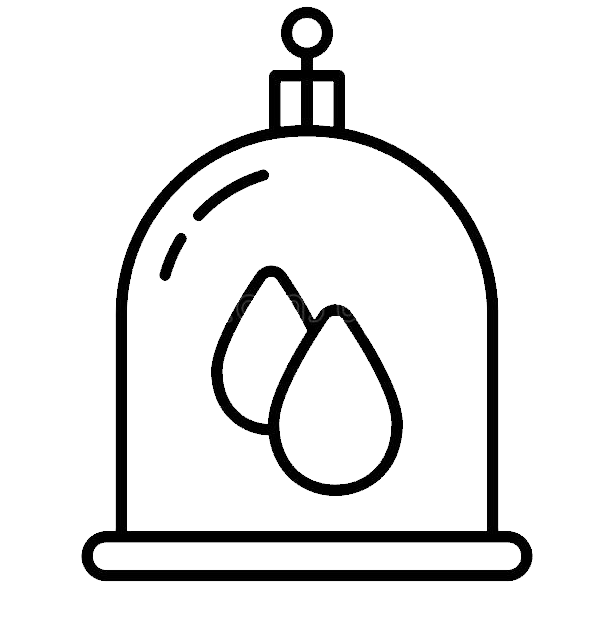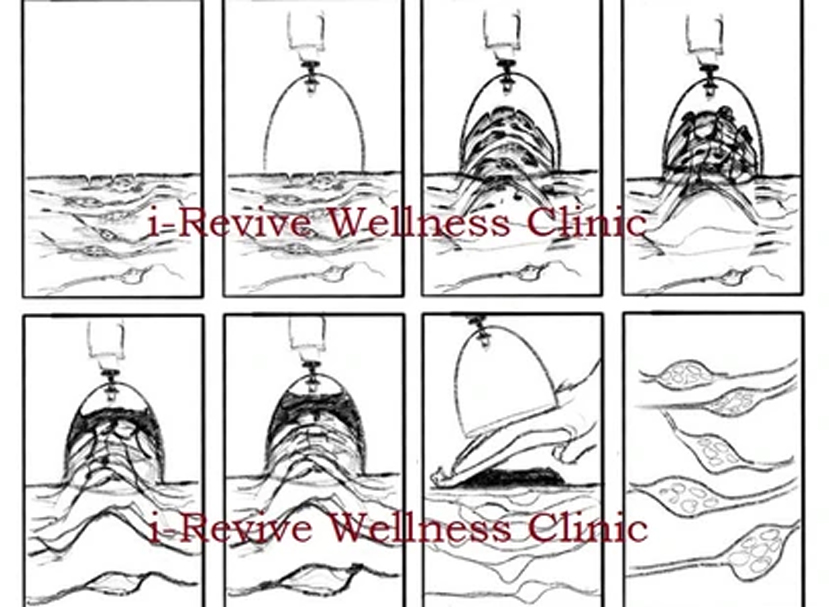

Mehdipatnam, Hyderabad, Telangana
9 am to 6 pm (Fridays off)
When cups are applied to the skin, a negative pressure is created, causing a rapid diffusion of various substances within the tissues. These substances are drawn to the surface, forming a pool primarily composed of stagnant blood in dysfunctional or dead capillaries. The cupping pressure causes mild ruptures in these capillaries. The pool also contains bio-molecules such as lactic acids, cellular debris, metabolic waste, environmental toxins, pharmaceutical residues, and substances acquired from our daily exposures. The accumulation of these substances can have detrimental effects on our health.After 7-10 minutes, the cups are removed, and small incisions are made before the cups are reapplied.

Through these punctures, a significant portion of the pool's contents are expelled from the body. If these elements remain, they can lead to organ dysfunction, failure, and various diseases.
The body responds to cupping as if it were an injury, sending a rush of blood carrying repairing and healing elements to the area. This increased blood circulation cleanses the area and delivers oxygen, nutrients, and resources to the deprived tissue cells, promoting natural healing. The different shades of discoloration observed under the cup reflect the bio-content present in the pooled area. A skilled practitioner can interpret these shades and address the underlying causes. By effectively addressing these causes, diseases can be prevented to a significant extent.
Apart from the above mentioned several physical reactions also occur underneath the cup. The suction created by the cup helps to release tension and tightness in the muscles and soft tissues. It can help alleviate muscle knots, and reduce pain and discomfort. The vacuum effect of the cup gently lifts and stretches the underlying tissues. This decompression can help separate the layers of soft tissue, promoting better movement, flexibility, and reducing adhesions or restrictions.

Writer
Imran Khan
Lead Practitioner at i-ReviveOne of the most commonly disregarded fact is that blood circulation issues can indirectly cause hormonal imbalances . Let's say when someone is diagnosed with Hypothyroid it not necessarily mean that the Thyroid gland...
Read MoreBlood cleansing plays a vital role in maintaining good health and overall well-being. The bloodstream acts as a transportation network, delivering essential nutrients, oxygen, and hormones to cells throughout the body and...
Read MoreThe proper functioning of our organs and muscles relies on a continuous and ample blood supply, which carries vital resources such as oxygen, nutrients, healing agents, hormones, anti-inflammatories, and natural pain relievers like opi...
Read MoreWhen cups are applied to the skin, a negative pressure is created, causing a rapid diffusion of various substances within the tissues. These substances are drawn...
Read MoreHijama, also known as cupping therapy, is considered a divine therapy that encompasses the body, mind, and soul. The human body relies on five vital organs—heart, brain, kidneys, liver, and lungs—for survival. The de...
Read MoreHijama Cupping therapy extends beyond the mere placement of cups, incisions, and blood extraction. The utilization of negative pressure and superficial incisions during Hijama Cupping yields diverse and profound effe...
Read MoreSpider veins are often confused with varicose veins, but there are distinct differences between the two. Spider veins are smaller, closer to the skin's surface, and typically do not cause significant symptoms. Varicose veins, on these a...
Read MorePolycystic ovary syndrome (PCOS) is a hormonal disorder affecting many women worldwide. It is characterized by hormonal imbalances, ovarian cysts, and various symptoms such as irregular menstrual cycles, excessive hair...
Read MoreHeavy metals, such as lead, mercury, arsenic, cadmium, and others, are toxic substances that can have extremely harmful effects on the body. Heavy metals can adversely affect human health: - Toxicity: Heavy metals ...
Read More